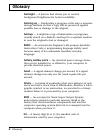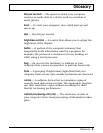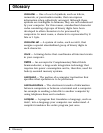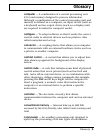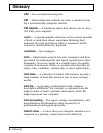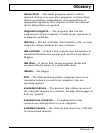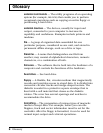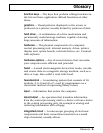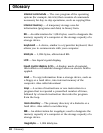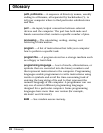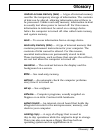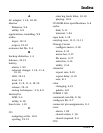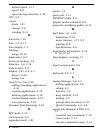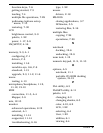
internal commands — The core program of the operating
system (for example,
MS-DOS) that consists of commands
necessary for day-to-day operations, such as copying files.
internal memory — A temporary storage area for
information (programs and data) in binary form.
KB — An abbreviation for 1,024 bytes; used to designate the
memory capacity of a computer or the storage capacity of a
storage device.
keyboard — A device, similar to a typewriter keyboard, that
allows you to communicate with your computer.
kilobyte — 1,024 bytes, abbreviated KB.
LCD — See liquid crystal display.
liquid crystal display (
LCD)— A display made of material,
that reflects or transmits changes when an electric field is
applied.
load — To copy information from a storage device, such as
a floppy or a hard drive, into internal memory of the
computer. Also called download.
loop — A series of instructions or one instruction in a
program that is repeated a prescribed number of times,
followed by a branch instruction that exits the program
from the loop.
main directory — The primary directory of a diskette or a
hard drive. Also called a root directory.
MB — An abbreviation for megabyte; used to designate the
memory capacity of a computer or the storage capacity of a
storage device.
megabyte — 1,024 kilobytes.
Glossary
10 Glossary



